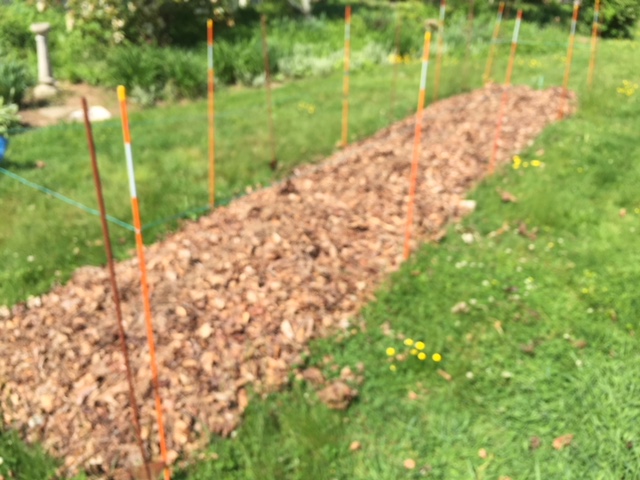Trash to Treasure in Your Garden
By Jean Golicz, Master Gardener and Mercy by the Sea Volunteer
Posted on
Spirit
Layer upon layer. Trial after trial. Our lives consist of a series of events folded in upon each other. A foundation is laid. Year after year, people, places, problems and pleasures are layered. Between what might seem like disjointed incidents, a vibrant life force blends the layers producing a beautiful, fertile landscape upon which we grow.
"Trash to treasure," our divine composter slowly, patiently recycles and restores even that which we would have chosen to discard. Nothing is wasted in our lives. Every moment, every encounter enriches the soil of our soul.
Soil
Sheet Composting or Lasagna Gardening
Sheet composting, also known as lasagna gardening, is an ancient technique used around the world. Here are simple steps for building this compost:
- Begin by mowing or scalping grass or other vegetation down to the lowest possible level to the length and width you would like the finished bed to measure. Three feet wide is a good width as this allows the center of the bed to be reached from either side. This may also be done directly in a constructed raised bed.
- Make sure there is good drainage by ”popping” or loosening the soil underneath the bed with a spading fork.
- Remove any pernicious or persistent weeds such as blackberry, bindweed, morning glory or quackgrass. Sheet composting may not smother these weeds.
- Cover the ground with 4-6 overlapping layers of newspaper or cardboard. Carbon material smothers the grass and weeds underneath by preventing light from allowing photosynthesis of the plants.
- Wet the newspaper or cardboard thoroughly and cover with a one-inch layer of a nitrogen source such as manure. Top the nitrogen with an inch of leaves, straw, bark or other carbon material.
- Add an inch layer of nitrogen; i.e., kitchen scraps, green produce scraps, manures or fresh green weeds (minus the seed heads) or a combination of all of them.
- Cover with another layer of carbon material: straw, shredded paper, leaves, dryer lint, etc.
- Continue to add alternating layers of carbon and nitrogen, as materials are available and final height is reached (18 inches to 3 feet).. As the material decomposes more layers may be added always ending with a carbon layer. This is the “blanket” that discourages flies from laying eggs on exposed nitrogen material such as kitchen scraps. The height of a bed may vary depending on the amount of material and when the bed will be planted. Generally speaking the greater the volume of material the longer it will take for decomposition to take place.
- The final layer may be covered with overlapping burlap coffee sacks to keep the materials neat and in place. The burlap will gradually decompose over time but may be removed when planting the bed.
To learn more, you can refer to this Oregon State University, Lane County Extension Service sheet composting resource.

Please stop by the area adjacent to the greenhouse to see the sheet composting project being developed by the Mercy Center Garden team. We are there Tuesday mornings if you have questions.
Once a month, the volunteer gardeners at Mercy Center will share lessons learned, both spiritual and practical. Look for these reflections on spirit and soil. Perhaps you might even consider joining them for a chat in the garden and a cup of tea. If interested, please contact Ann McGovern, RSM, at 203.245.0401, ext. 111.
Sign up to receive our blog posts directly to your email inbox. Simply click the button below and enjoy news, reflections and inspiration from our executive director, staff, volunteers, presenters and others involved in Mercy by the Sea.
